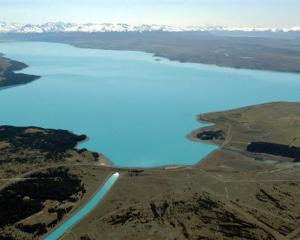
The paper ''Energy Futures'' was a thought piece exploring what electricity demand might look like in the future if New Zealand increased its level of electrification.
It could be viewed as a comparison paper to the Productivity Commission's report released last month, he said.
Transpower was forecasting electricity demand would more than double from about 40 terawatt hours (TWh) to 80TWh by 2050, equating to growth of nearly 2.5% a year from now.
''This is more bullish than any electricity demand forecast produced so far.''
Most of the growth came from electrification of industrial processes and transport, Mr Foster said.
Residential consumption would be flat. Consumption per household would continue to decline and commercial demand would increase in line with GDP.
Electricity as a share of total energy would increase from about 25% to 61%.
The electrification of other processes would increase the importance of security of supply of electricity.
''We question whether putting all of New Zealand's eggs in the electricity basket is a sensible move.''
Among the key assumptions made in the paper was both light and heavy vehicles becoming electrified, he said.
It was assumed 40% of vehicles would be electric by 2030, rising to 85% by 2050.
The forecast was more aggressive than Forsyth Barr's assumption that light vehicles would be 15% of the total by 2030 and 77% by 2050, Mr Foster said.
It was also more optimistic than the most optimistic EV assumptions.
Another key assumption was 100% of coal-fired and 40% of gas-fired industrial processes would be electrified.
It also assumed 16TWh of demand increase would be met by solar - a combination of residential solar from 1.5 million homes, and utility-scale solar installations.
''We also struggle with this assumption and would be surprised if solar has that sort of take-up in New Zealand.''
The white paper did not appear to consider market dynamics and the potential increase in electricity costs that might dampen demand.
While the paper cited many different sources, it did not appear to have engaged with the generator/retailers, which would clearly have a view. Nor did it appear to have engaged with distribution companies.
''This is an interesting paper and while it highlights the bull case for electricity in New Zealand, we are sceptical the future is that rosy.''













